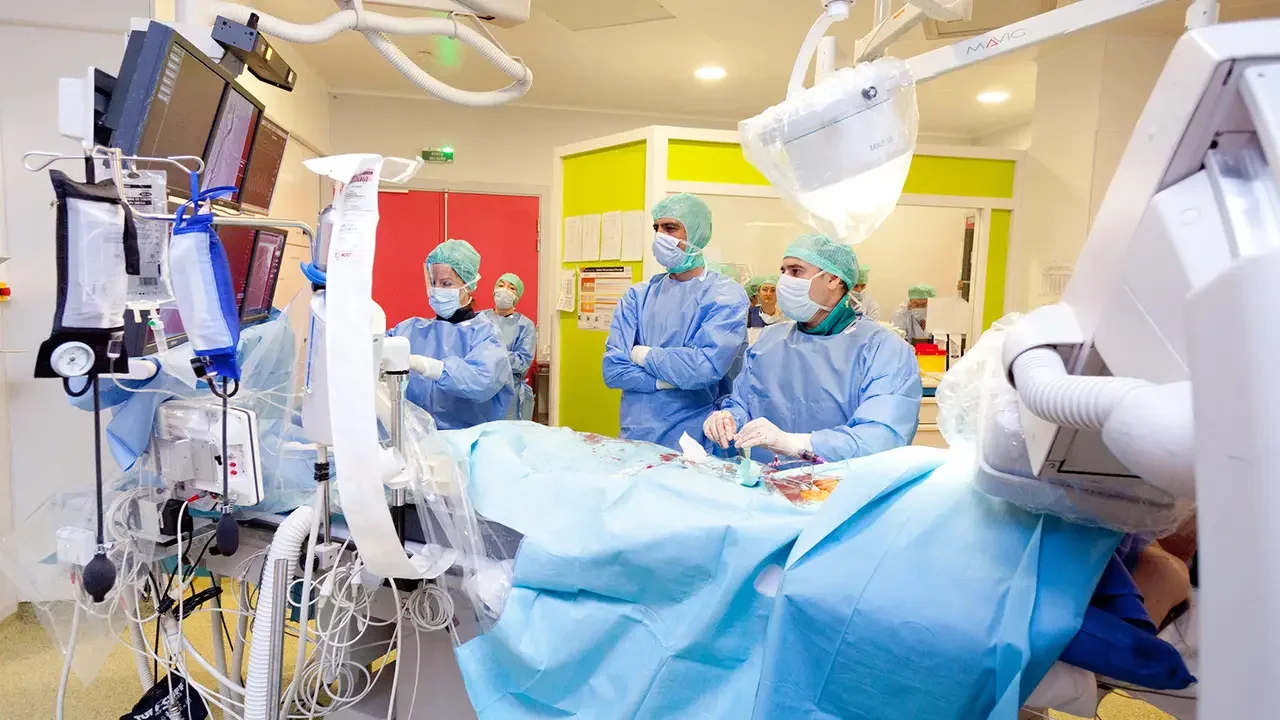Too Many TAVR Centers Are Clustered Around Well-to-Do Communities
The proliferation of transcatheter aortic valve replacement (TAVR) programs in the U.S. was largely limited to metropolitan areas and hospitals serving relatively affluent patients, a study found.
Only 2% of the 583 hospitals with a TAVR program by the end of 2018 were not located in metropolitan areas, and there was only one rural center. Furthermore, half of new programs established in 2012 to 2018 were situated near pre-existing TAVR programs, reported Ashwin Nathan, MD, MS, of the Hospital of the University of Pennsylvania in Philadelphia, and colleagues.
Hospitals that poured money into establishing TAVR programs were characterized by a patient population that was less likely to have dual eligibility for Medicaid (12.36% vs 15.19% of candidate hospitals that did not offer TAVR, P<0.001), had higher median household incomes ($56,756 vs $54,309, P<0.001), and were in areas with lower distressed communities index scores (42.78 vs 46.80, P<0.001).
"During the initial growth phase of TAVR programs in the United States, hospitals serving wealthier patients were more likely to start programs. This pattern of growth has led to inequities in the dispersion of TAVR, with lower rates in poorer communities," Nathan and colleagues wrote in Circulation: Cardiovascular Quality and Outcomesopens in a new tab or window.
Thus, the clustering of TAVR centersopens in a new tab or window since the procedure's FDA approval in 2011 may be part of ongoing geographic and socioeconomic disparities in care.
The study authors attributed the phenomenon to both volume requirements of TAVR's National Coverage Determinationopens in a new tab or window (NCD) and financial incentives.
"Due to cost-of-living adjustments in Medicare reimbursements, hospitals serving economically disadvantaged populations may have lower TAVR reimbursement, which may render this procedure financially nonviable for these hospitals and the procedure unavailable for disadvantaged patients," Nathan's group noted.
Of newer high-cost technologies, "TAVR may be particularly sensitive to propagating inequities in care, given the need for multiple treating physicians, extensive specialized preprocedural testing, and surgical and interventional site-volume requirements for centers seeking to offer this therapy," they pointed out.
Nevertheless, they said, the problems of access to this therapy may be just a small piece of a larger problem of disparitiesopens in a new tab or window in primary care and diagnostic cardiology services.
Past president of the American College of Cardiology Ralph Brindis, MD, MPH, of the University of California San Francisco, shared that sentiment. He cited estimates that there are already 780 hospitals offering TAVR in the U.S. to date, and approximately 1,100 performing surgical aortic valve replacementopens in a new tab or window (SAVR).
"That's a heck of a lot of centers," he said in an interview. "How many centers do we actually need to be able to meet access issues and yet assure on quality issuesopens in a new tab or window?"
Access is not just about the length of a person's drive to a TAVR center: it also involves a host of other issues related to socioeconomic inequalities, he noted.
According to Brindis, the real driver in disparities of careopens in a new tab or window is inadequate access first to primary care, then to an internist, and finally to a cardiologist who can diagnose a person's aortic stenosis and determine their need for a surgical or transcatheter valve intervention.
SAVR is subject to the same problems of unequal access across the country, he said.
"From a public health perspective, striking a balance between quality care to achieve safe procedural outcomes with healthcare access to eliminate inequity in cardiovascular care within different regions of the U.S. is essential," commented Abdulla Damluji, MD, PhD, MPH, of Inova Heart and Vascular Institute and Johns Hopkins University in Baltimore.
"Further, addressing the financial barriers to establish TAVR programs in low-population-density, rural areas, and socioeconomically disadvantaged regions must be addressed to achieve equity in cardiovascular care while maintaining quality and focus on patient safety," Damluji told MedPage Today.
The matter is pressing given that demand for the procedure is likely to grow in step with the influx of newly eligible low-risk patientsopens in a new tab or window and an aging population.
"My own personal feeling is I actually prefer high-volume centers because, in general, high-volume centers breed better outcomes, whether mortality or periprocedural complications," Brindis said. "The proliferation of centers to do low volume in hopes you'll increase access, I don't think is a wise U.S. strategy."
The study by Nathan's team was based on Medicare claims data for fee-for-service beneficiaries who underwent TAVR from January 2012 through December 2018.
Hospitals that met the NCD requirement of having on-site cardiac surgery and performed at least 10 TAVR procedures over this period were categorized as established TAVR programs. These centers were compared with cardiac surgery-capable sites that did offer TAVR.
The number of newly established TAVR programs generally decreased each year from 2012 to 2018, the authors noted.
The study authors did not include Medicare Advantage patients -- a population in whom geographic and socioeconomic disparities may be assuaged to some degree -- in their dataset, Brindis noted.


